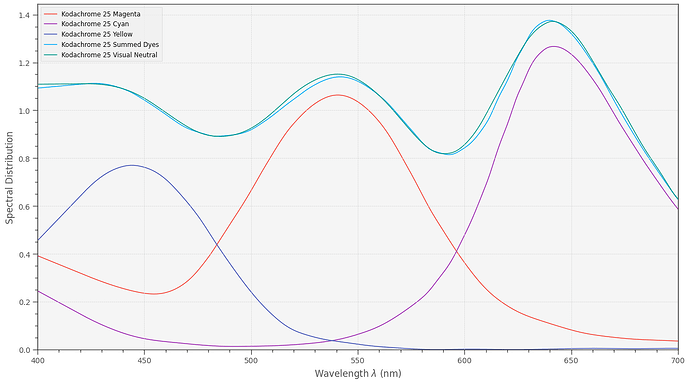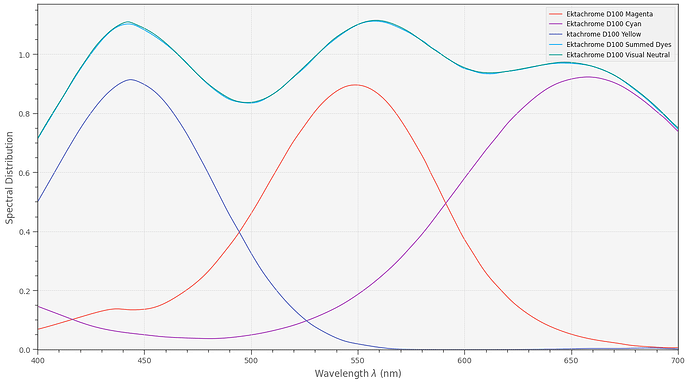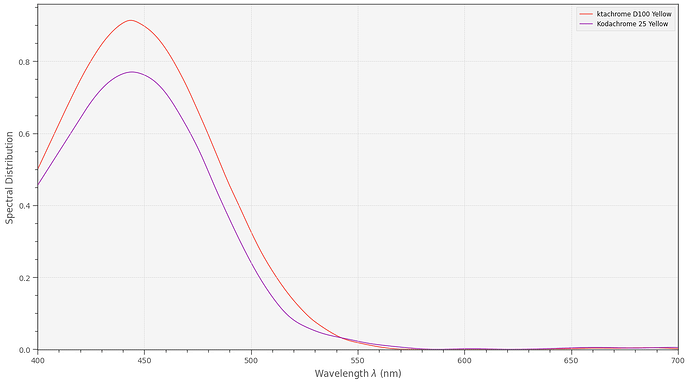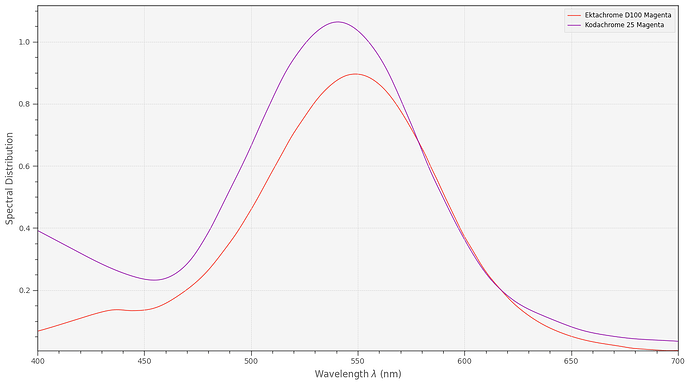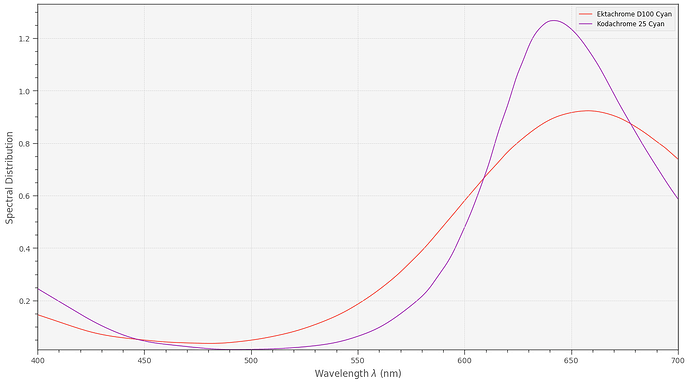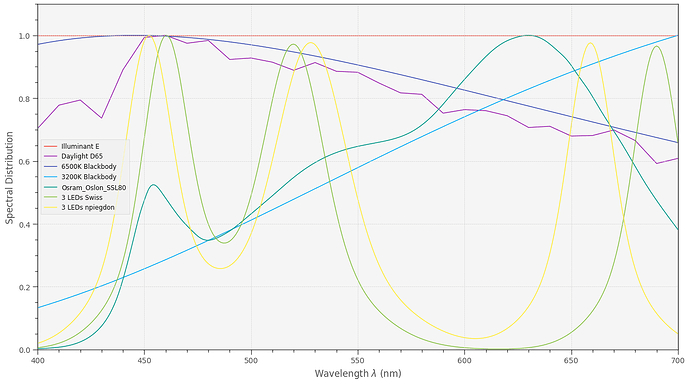Yep, exactly. Besides, it might not even be noticable in the first place. Variances in the development process in those old days might have a much larger influence on color fidelity than this.
Interesting question. Here’s a plot of the digitized data from the Kodachrome 25 data sheet,
and here’s the equivalent one for Ektachrome 100D:
Comparing the dye’s spectra separately, one gets for the yellow dyes:
This is the comparision for the magenta ones:
and finally for the cyan dyes:
There is indeed not too much difference how the dye spectra behave over the interesting wavelength range.
Some commercial scanners do use rather narrow interference-based bandpass filters. I am more interested on whether the Swiss setup (described in the DIASTOR-paper) does make any sense. Frankly, I think not. Here are some illumination spectra I generally play around with:
You might be interested in the yellow curve. Comparing this to the Swiss illumination choice, it’s obvious that your narrowband setup delivers power on all wavelengths. The Swiss illumination (if I used the correct numbers - need to check this again) has however an annoying dip between
610 nm and 620 nm. In other words: basically features a blind spot. No 3D-LUT can recover from this.
I do not think that this issue is too crucial, given the broad dye spectra, but this is exactly what I am interested in.
Certainly the scan quality depends on the placement of the three narrowband LEDs - that’s what I discovered when I started to look into film scanning. My original setup was very similar to the Swiss one, a later one more like your own setup, yielding better results.
